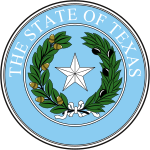
Throckmorton County is a county located in the U.S. state of Texas. As of the 2020 census, its population was 1,440. Its county seat is Throckmorton. The county was created in 1858 and later organized in 1879. It is named for William Throckmorton, an early Collin County settler. Throckmorton County is one of four remaining prohibition, or entirely dry, counties in Texas.

General of the Army Philip Henry Sheridan was a career United States Army officer and a Union general in the American Civil War. His career was noted for his rapid rise to major general and his close association with General-in-chief Ulysses S. Grant, who transferred Sheridan from command of an infantry division in the Western Theater to lead the Cavalry Corps of the Army of the Potomac in the East. In 1864, he defeated Confederate forces under General Jubal Early in the Shenandoah Valley and his destruction of the economic infrastructure of the Valley, called "The Burning" by residents, was one of the first uses of scorched-earth tactics in the war. In 1865, his cavalry pursued Gen. Robert E. Lee and was instrumental in forcing his surrender at Appomattox Courthouse.

The Texas Senate is the upper house of the Texas Legislature, with the Texas House of Representatives being the lower house. Together, they compose the state legislature of the state of Texas.

The Fifth Military District of the U.S. Army was one of five temporary administrative units of the U.S. War Department that existed in the American South from 1867 to 1870. The district was stipulated by the Reconstruction Acts during the Reconstruction period following the American Civil War. It covered the states of Texas and Louisiana.
The Reconstruction Acts, or the Military Reconstruction Acts, were four statutes passed during the Reconstruction Era by the 40th United States Congress addressing the requirement for Southern States to be readmitted to the Union. The actual title of the initial legislation was "An act to provide for the more efficient government of the Rebel States" and was passed on March 4, 1867. Fulfillment of the requirements of the Acts was necessary for the former Confederate States to be readmitted to the Union from military and Federal control imposed during and after the American Civil War. The Acts excluded Tennessee, which had already ratified the 14th Amendment and had been readmitted to the Union on July 24, 1866.
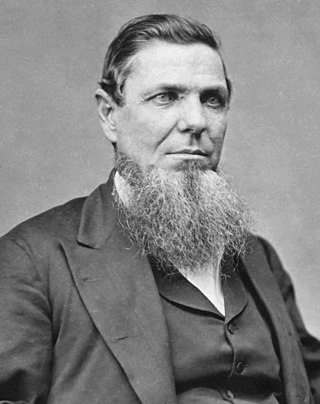
Andrew Jackson Hamilton was an American politician during the third quarter of the 19th century. He was a lawyer, state representative, military governor of Texas, as well as the 11th Governor of Texas during Reconstruction.
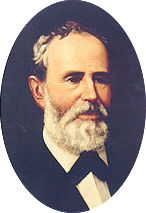
Elisha Marshall Pease was a Texas politician. He served as the fifth and 13th governor of Texas.
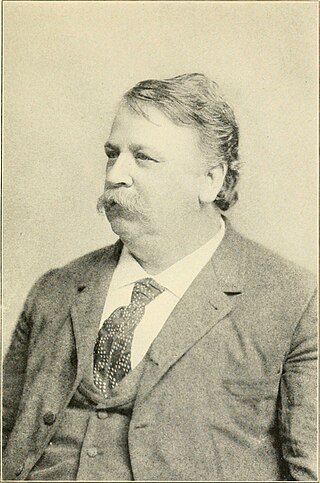
George Augustus Sheridan was an American Civil War veteran and politician who, along with Effingham Lawrence is known for serving for the shortest term in congressional history, serving for just one day in the U.S. House of Representatives.

Wesley Merritt was an American major general who served in the cavalry of the United States Army during the American Civil War, American Indian Wars, and Spanish–American War. Following the latter war, he became the first American Military Governor of the Philippines.

James Webb Throckmorton was an American politician who served as the 12th governor of Texas from 1866 to 1867 during the early days of Reconstruction. He was a United States Congressman from Texas from 1875 to 1879 and again from 1883 to 1889.

The New Orleans Massacre of 1866 occurred on July 30, when a peaceful demonstration of mostly Black Freedmen was set upon by a mob of white rioters, many of whom had been soldiers of the recently defeated Confederate States of America, leading to a full-scale massacre. The violence erupted outside the Mechanics Institute, site of a reconvened Louisiana Constitutional Convention. According to the official report, a total of 38 were killed and 146 wounded, of whom 34 dead and 119 wounded were Black Freedmen. Unofficial estimates were higher. Gilles Vandal estimated 40 to 50 Black Americans were killed and more than 150 Black Americans wounded. Others have claimed nearly 200 were killed. In addition, three white convention attendees were killed, as was one white protester.
The 11th Texas Legislature met from August 6, 1866, to November 13, 1866, in its regular session. All members of the House of Representatives and about half of the members of the Senate were elected in 1865.
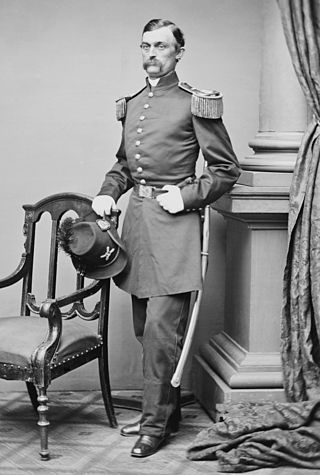
Charles Griffin was a career officer in the United States Army and a Union general in the American Civil War. He rose to command a corps in the Army of the Potomac and fought in many of the key campaigns in the Eastern Theater.

George Washington Jones was an American politician who served as lieutenant governor of Texas and was a Greenback member of the United States House of Representatives.
The Department of the Missouri was a command echelon of the United States Army in the 19th century and a sub division of the Military Division of the Missouri that functioned through the Indian Wars.

David Catchings Dickson was an American politician and physician in early Texas who served as the ninth Speaker of the Texas House of Representatives and as the fourth Lieutenant Governor of Texas. He was also a State Senator and unsuccessfully ran for governor of Texas.

Benjamin Franklin Flanders was a teacher, politician and planter in New Orleans, Louisiana. In 1867, he was appointed by the military commander as the 21st Governor of Louisiana during Reconstruction, a position which he held for some six months. He was the second and, as of 2023, the last Republican mayor of New Orleans, Louisiana.
Following the defeat of the Confederate States in the American Civil War, Texas was mandated to rejoin the United States of America. Union Army soldiers officially occupied the state starting on June 19, 1865. For the next nine years, Texas was governed by a series of provisional governors as the state went through Reconstruction. As stated by the Texas State Library and Archive Commission, in 1869, the United States Congress passed an act allowing the citizens of Texas to vote on a new State Constitution. Later that same year, President Grant approved their Constitution. Texas fully rejoined the Union on March 30, 1870, when President Grant signed the act to readmit Texas to Congressional Representation. Texas later repealed the State Constitution of 1869 and enacted the Texas State Constitution of 1876 on February 15, 1876, which remains their current state constitution though with numerous amendments.

The 1869 Texas gubernatorial election was held to elect the Governor of Texas. Incumbent Governor Elisha M. Pease, who had been appointed by military governor Philip Sheridan, did not run for re-election. Edmund J. Davis defeated former Governor Andrew J. Hamilton narrowly.


